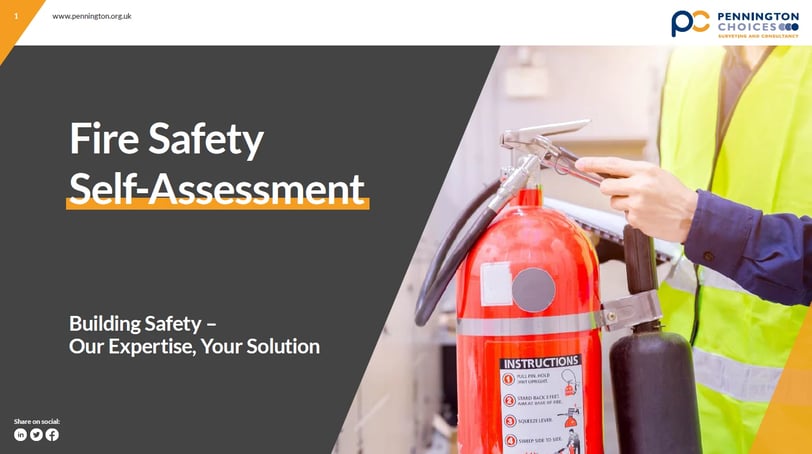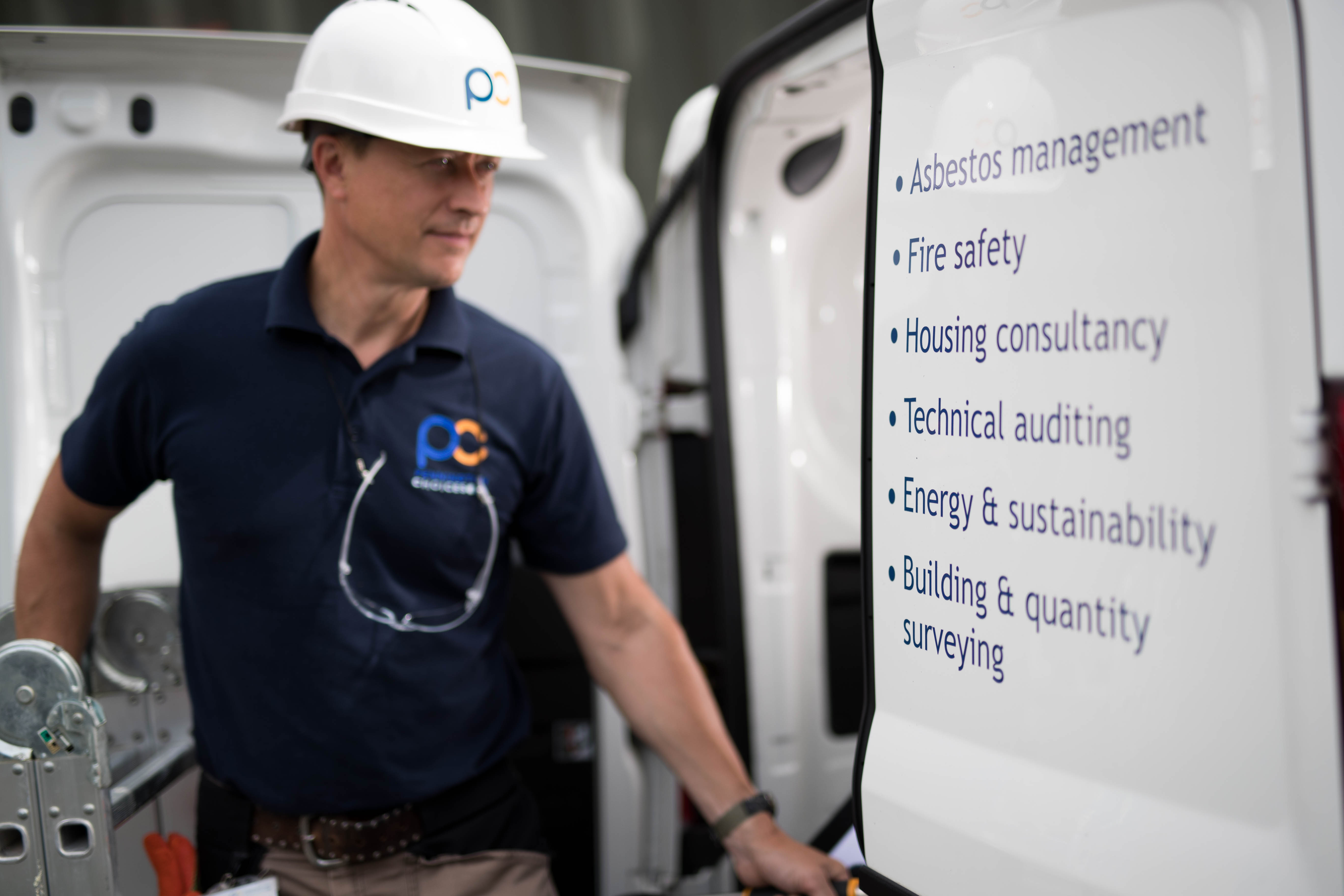Sign up to our newsletter
Last updated: 7th February 2024
In the ever-changing landscape of fire regulations, we recognise the pressures faced when trying to ensure compliance with changes to legislation and recent updates. We also understand that whilst tenant safety should be front and centre at Board and Leadership level, it is more than just complying with legislative and regulatory obligations.
To detect, alert, prevent, suppress, and restrict a developing fire, a comprehensive fire protection plan is needed and should include both Active and Passive measures. Fire doors, compartmentation, and fire stopping are the key areas of passive fire protection, all of which can be assessed in a Compartmentation Survey and Fire Risk Assessment (FRA). But is this alone enough to keep your buildings and tenants safe from fire?
Who is responsible for completing a Fire Risk Assessment (FRA)?
Under the Fire Safety Act 2021, the Responsible Person (RP) is legally required to carry out an FRA of your building/s. Completing an FRA is a requirement under several other fire safety legislation, including the Regulatory Reform (Fire Safety) Order 2005. These regulations emphasise the importance of the FRA as an essential document in ensuring the safety of your buildings.
The FRA analyses the measures needed to prevent fire and keep tenants safe. It must be reviewed on a regular basis to ensure any changes to how a building is used. Any alterations to a building's layout or changes in the number of occupants living in the building must be reflected and recorded in the FRA. It's crucial that you understand the key components of an FRA and how to sufficiently complete one.
Five steps to completing an FRA
During the FRA process, a thorough examination of the premises must be undertaken to identify any potential fire hazards. This is important to ensure that appropriate measures are in place to stop fire starting and to provide adequate fire protection for everyone within the building.
Step one - Fire hazards
A fire hazard is anything that can start a fire, such as ignition sources or combustible materials. You must consider:
- Electrical equipment
- Smoking
- Arson
- Heating
- Cooking
- Housekeeping
- Contractors
Step two - People at risk
- Keep a record of the number of people on the premises
- Identify any young, disabled, or lone workers present on the premises
Step three - Evaluate and act
- Find out how many floors and staircases there are on the premises
- Identify the number and location of exits
- Consider the necessity of fire alarms, fire exit signs, emergency lighting, and fire extinguishers
Step four - Record, plan, and train
- Create a clear and comprehensive plan outlining the necessary steps you will take to keep people safe from fire, with details of what needs doing and when using the previous steps to ensure all areas are covered
- Ensure your staff are well briefed on what to do in the event of a fire
- Schedule and carry out regular fire drills, learning from what works well
Step five - Review
It's crucial that you treat your FRA as a live document that needs to be reviewed regularly and updated if there are any significant changes.
Recent legislation updates
On 1st October 2023, Section 156 of the Building Safety Act came into force, updating RPs FRA responsibilities. The main change highlighted by the guidance is that you must now record the FRA in full (including all the findings) and the fire safety arrangements for your premises in all circumstances. This amends the previous requirements of only recording the information if there were five or more employees in the business or where subject to licensing or an alterations notice.
Under these regulations, it's important to note that if you appoint a fire risk assessor to undertake your FRA, you must record their name and where applicable, their organisation name so there is a clear record for enforcing authorities. As RP, you are responsible for ensuring that your FRA is completed and robust even when you appoint a fire risk assessor.
Appointing a fire risk assessor
When appointing a risk assessor, you must take all the necessary steps to ensure they are reliable with the ability to create a robust and representative FRA. Discover how to appoint a reliable fire safety consultant in our dedicated blog, 'Your Guide to Appointing A Reliable Fire Safety Consultant'.
Our FRAs comprehensively cover the following to meet statutory obligations:
- Fire safety features (passive and active)
- Means of escape
- Fire detection and warning systems
- Firefighting equipment
- Removal or safe storage of dangerous substances
- The needs of vulnerable people (elderly, young children, or those with disabilities, etc.)
- Compartmentation
- Cladding
- Evacuation strategies
- Detailed action plan
- Asset register (on request)
- Provide quality-checked FRA reports in PDF, including a detailed action plan of works required and images
- Where required, we can work with your compliance systems to submit the FRAs and the actions/recommendations from these FRAs directly into your databases.
But is a Fire Risk Assessment enough?
If you already have an FRA in place but want to ensure you are doing everything you can to keep your tenants and building safe, having an independent audit of your FRAs will help you to:
- Raise the standards of your existing FRA suppliers. When it comes to keeping people and buildings safe, it is not about exposing their errors, it is about improving quality across the industry.
- Demonstrate practical compliance, assure your tenants and board, and meet the expectations of the Regulator.
- Manage your records. We can provide you with clearly defined metrics and actions your FRA suppliers may need to take.
- Avoid compliance scrutiny, intervention, or downgrade.
It's also crucial to take a step back and consider your building from the outside by assessing the design and material that make up your building's External Wall System (EWS). A Fire Risk Appraisal of External Walls (FRAEWs) is based on the latest industry-standard PAS 9980:2022 and is a mandatory requirement in various fire safety legislations, including the Fire Safety Act 2021 and Fire Safety (England) Regulations 2022.
Having an FRAEW is vital when there is a known or suspected risk associated with the construction of the external wall, such as using combustible materials. Understanding and prioritising these regulations is essential to ensuring the compliance of your buildings and the safety of your tenants.
As an RP, an additional step you can take to ensure the safety of your tenants and prevent damage to the structure of the building is a Compartmentation Audit. This is a simple way of assessing the adequacy of your compartmentation and will provide you and your tenants with the assurance that your survey has been undertaken correctly and comprehensively.
If you are struggling to understand any aspect of your FRA or FRAEW process, get in touch with one of our experts who can work collaboratively with you to carry out your building's FRA, ensuring that you gain a robust understanding of your building, any risks that are identified, and your next steps to address them.

Download your Fire Safety self-assessment
Our FREE Fire Safety self-assessment guide is here to help you identify any gaps in your Fire Safety compliance. Whilst it should not be used as a comprehensive assessment, it will help you assess your fire safety management so you can identify and address any gaps in your approach.






